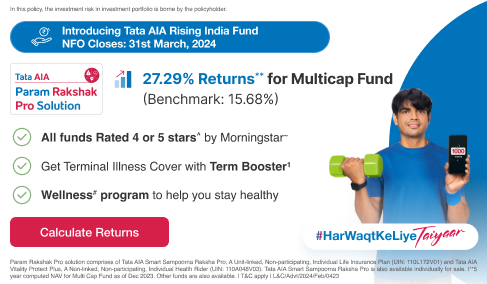5 Tips to Remember for Tax Planning in India
2-August-2021 |
India has one of the highest individual tax rates compared to most countries in the world. According to KPMG's reports from its global member firms, the global average tax rate for 2021 is 31.27%, while India's maximum marginal tax rate is 42.74%. India stands in the top 10 percentile of highest tax rates globally, with China, Finland, Greece, and a few others.
This makes tax planning one of the essential tools in the gearbox of every income-earning Indian. The Indian Income Tax Act, 1961 (the "Act") is arguably one of the most complex yet specific pieces of legislation, with ongoing litigation against a majority of the sections and rules under its umbrella. This makes things both better and worse for Indian individuals.
The specificity of the legislation allows individuals to take full advantage of all the benefits to which an individual is entitled. The complexity casts a shadow of ambiguity over the interpretation of certain sections allowing individuals to take a stand on how their incomes should be taxed. The rules provide individuals with a broad scope for tax planning for the incomes they earn. Let's look at a few frequently asked questions.
What is the Importance of Tax* Planning?
Let us take an example to answer this question:
Say a [senior] manager at one of the top multinational companies earns ₹ 40 Lakh per annum. (We do not wish to discuss the salary components here, as each element would be taxed differently in different countries). How would such an individual be taxed on a gross income basis?
Particulars |
India (in ₹) |
Earned Salary |
₹ 40,00,000.00 |
Effective Tax rate** |
26.33% |
Tax without any tax planning |
₹ 10,53,000.00 |
**Effective tax rate for India is computed considering GTI of ₹ 45 Lakh and the slab rates, and cess for FY 2020-21 per the Finance Act, 2021, not opting for the new scheme
So, if you work hard for over 280 days a year and make great efforts to earn ₹ 40 Lakh per annum (well above the nation's average), without efficient tax planning, you will end up paying more than ₹ 10.50 Lakh to the government. Would you want to pay this hefty amount? Of course not. Furthermore, these are only the taxes paid on salaries. In cases where individuals earn other incomes in the form of rent from owned properties, interest, dividend, or capital gains, there would be an additional outflow in the form of taxes under each category.
Other advantages of tax planning include avoiding unnecessary litigation and leveraging productivity by ensuring that incomes from different sources are used and invested in productive causes and efficient channels.
Therefore, tax planning and management are essential to empower an individual to save as much tax as possible.
What are the Types of Tax* Planning?
Generally, tax planning can be divided into four types:
Short-term: This is usually done at the end of the fiscal year, with the primary objective of reducing the upcoming tax outflow. There are no real long-term commitments created out of such tax planning, and the approach is generally short-sighted.
Long-term: A prudent investor and saver would follow the long-term tax planning approach by planning the entire fiscal year's financial activity at the beginning of the year. Contrary to short-term tax planning, this approach may not result in immediate tax reduction/ benefits. However, the process supports the long-term overall return objectives of the planner.
Purposive tax planning: This approach involves combining your expected returns from proposed investments and the tax benefits of such investments. The result is a selection of those investments which are linked to specific or general tax benefits. A tax-averse investor would follow this approach to maximize returns while paying the least possible tax on such returns.
Permissive tax planning: This approach involves studying all the benefits available to any planner under the Act and leveraging them to minimize tax outflows.
How is Tax* Planning Done?
As mentioned before, the specificity and the complexity of the Act provide ample scope of tax planning for an individual in India. A useful way of ensuring decent tax savings is by purchasing insurance policies. Life insurance is one of the most important and frequently bought policies to secure the family from an uncertain future.
Legislative provisions:
Section 80C of the Act allows you to reduce your taxable income through any payments you make towards life insurance premiums, up to ₹ 1.50 Lakh per annum.
Section 10(10D) of the Act makes proceeds from the policy upon the death of the insured and/ or maturity proceeds where the annual premiums payable do not exceed 10% of the sum insured exempt.
A recent amendment to this section states that proceeds from a Unit Linked Insurance Plan (ULIP Policy) would be taxable in cases where the premium paid exceeds ₹ 2.50 Lakh per annum.
So, how does Tata AIA Life Insurance help you save tax*? Fortunately, that's pretty simple. On their online portal: Tata AIA Life Insurance Online, you can find the tax saver plan in the form of a ULIP that covers your risks and offers tax benefits under the legislative provisions detailed above.
Consequently, the ULIP policy could save an amount equal to the effective tax rate up to a maximum of ₹ 1.50 Lakh every year. This makes the ULIP policy a vital weapon in the war chest against paying hefty sums of tax.
1. ULIP is a combination of life insurance and an investment product. A portion of the periodic payments is used to cover the life insurance policy, while the rest is invested in financial securities.
Conclusion: 5 Tips to Remember for Tax Planning in India
Be a prudent investor and a proactive tax planner while performing your tax planning and management activities. Follow a combined approach of long-term + purposive tax planning methods to maximize returns while minimizing tax outflows.
Study, track, and stay updated on all the benefits available to you under tax legislation in India.
Invest in insurance policies and other available investment products and avenues to fully avail of the benefits available under respective sections (for insurance: Section 80C and 10(10D)).
Do not violate the provisions under any of the sections and rules specified in the tax legislation to prevent litigation costs, penal interests, and penalties under the Act and regulations thereunder.
Use online resources to learn more about free tax planning and return filing. This will enable you to save ancillary costs to the tune of thousands and sometimes in Lakh.
People Also Ask Answered:
What is the importance of tax planning? |
How is tax planning done? |
What are the types of tax planning? |
L&C/Advt/2021/Aug/1349


 FOR EXISTING POLICY
FOR EXISTING POLICY
 FOR NEW POLICY
FOR NEW POLICY





















